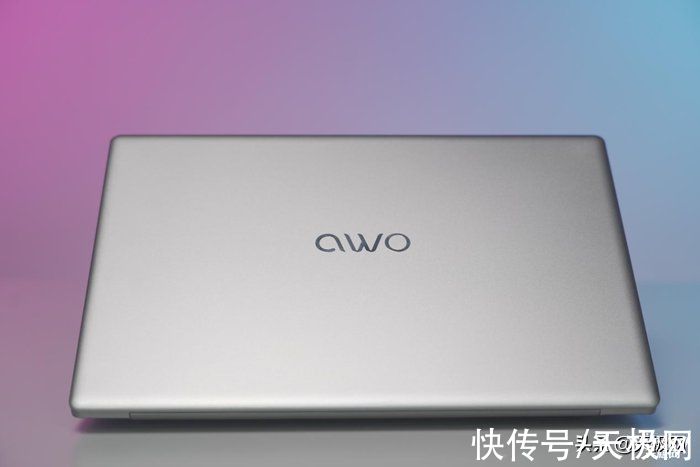SpringBoot实战之实现结果的优雅响应案例详解
今天说一下 Spring Boot 如何实现优雅的数据响应:统一的结果响应格式、简单的数据封装。
前提
无论系统规模大小,大部分 Spring Boot 项目是提供 Restful + json 接口,供前端或其他服务调用,格式统一规范,是程序猿彼此善待彼此的象征,也是减少联调挨骂的基本保障。
通常响应结果中需要包含业务状态码、响应描述、响应时间戳、响应内容,比如:
{对于业务状态码分为两个派系:一个是推荐使用 HTTP 响应码作为接口业务返回;另一种是 HTTP 响应码全部返回 200,在响应体中通过单独的字段表示响应状态。两种方式各有优劣,个人推荐使用第二种,因为很多 Web 服务器对 HTTP 状态码有拦截处理功能,而且状态码数量有限,不够灵活。比如返回 200 表示接口处理成功且正常响应,现在需要有一个状态码表示接口处理成功且正常响应,但是请求数据状态不对,可以返回 2001 表示。
"code": 200,
"desc": "查询成功",
"timestamp": "2020-08-12 14:37:11",
"data": {
"uid": "1597242780874",
"name": "测试 1"
}
}
自定义响应体 定义一个数据响应体是返回统一响应格式的第一步,无论接口正常返回,还是发生异常,返回给调用方的结构格式都应该不变。给出一个示例:
@ApiModel@Datapublic class Response{@ApiModelProperty(value = "https://www.it610.com/article/返回码", example = "200")private Integer code; @ApiModelProperty(value = "https://www.it610.com/article/返回码描述", example = "ok")private String desc; @ApiModelProperty(value = "https://www.it610.com/article/响应时间戳", example = "2020-08-12 14:37:11")private Date timestamp = new Date(); @ApiModelProperty(value = "https://www.it610.com/article/返回结果")private T data; }
这样,只要在 Controller 的方法返回
Response就可以了,接口响应就一致了,但是这样会形成很多格式固定的代码模板,比如下面这种写法:@RequestMapping("hello1")public Response hello1() {final Response response = new Response<>(); response.setCode(200); response.setDesc("返回成功"); response.setData("Hello, World!"); return response; }
调用接口响应结果为:
{这种重复且没有技术含量的代码,怎么能配得上程序猿这种优(lan)雅(duo)的生物呢?最好能在返回响应结果的前提下,减去那些重复的代码,比如:
"code": 200,
"desc": "返回成功",
"timestamp": "2020-08-12 14:37:11",
"data": "Hello, World!"
}
@RequestMapping("hello2")public String hello2() {return "Hello, World!"; }
这就需要借助 Spring 提供的
ResponseBodyAdvice来实现了。全局处理响应数据 先上代码:
/** *
created at 2020/8/12 * * @author www.howardliu.cn * @since 1.0.0 */@RestControllerAdvicepublic class ResultResponseAdvice implements ResponseBodyAdvice
上面代码是实现了 Spring
ResponseBodyAdvice类的模板方式,按照 Spring 的要求实现就行。只有两个需要特别注意的地方,也就是代码中标注 1 和 2 的地方。首先说 1 这一行,也就是
supports方法,这个方法是校验是否需要调用beforeBodyWrite方法的前置判断,返回true则执行beforeBodyWrite方法,这里根据 Controller 方法返回类型来判断是否需要执行beforeBodyWrite,也可以一律返回true,在后面判断是否需要进行类型转换。然后重点说下 2 这一行,这行是坑,是大坑,如果对 Spring 结构不熟悉的,绝对会在这徘徊许久,不得妙法。
代码 2 这一行是判断
Controller的方法是否返回的是String类型的结果,如果是,将返回的对象序列化之后返回。这是因为
Spring对String类型的响应类型单独处理了,使用StringHttpMessageConverter类进行数据转换。在处理响应结果的时候,会在方法getContentLength中计算响应体大小,其父类方法定义是protected Long getContentLength(T t, @Nullable MediaType contentType),而StringHttpMessageConverter将方法重写为protected Long getContentLength(String str, @Nullable MediaType contentType),第一个参数是响应对象,固定写死是String类型,如果我们强制返回Response对象,就会报ClassCastException。当然,直接返回
String的场景不多,这个坑可能会在某天特殊接口中突然出现。补充说明 上面只是展示了
ResponseBodyAdvice类最简单的应用,我们还可以实现更多的扩展使用。比如:- 返回请求ID:这个需要与与
RequestBodyAdvice联动,获取到请求ID后,在响应是放在响应体中; - 结果数据加密:通过
ResponseBodyAdvice实现响应数据加密,不会侵入业务代码,而且可以通过注解方式灵活处理接口的加密等级; - 有选择的包装响应体:比如定义注解
IgnoreResponseWrap,在不需要包装响应体的接口上定义,然后在supports方法上判断方法的注解即可,比如:
@Overridepublic boolean supports(final MethodParameter returnType, final Class> converterType) {final IgnoreResponseWrap[] declaredAnnotationsByType = returnType.getExecutable().getDeclaredAnnotationsByType(IgnoreResponseWrap.class); return !(declaredAnnotationsByType.length > 0 || returnType.getGenericParameterType().equals(Response.class)); }
很多其他玩法就不一一列举了。
总结 上面说了正常响应的数据,只做到了一点优雅,想要完整,还需要考虑接口异常情况,总不能来个大大的try/catch/finally包住业务逻辑吧,那也太丑了。后面会再来一篇,重点说说接口如何在出现异常时,也能返回统一的结果响应。
本文只是抛出一块砖,玉还得自己去找。
推荐阅读
- SpringBoot 实战:一招实现结果的优雅响应
- SpringBoot 实战:如何优雅的处理异常
- SpringBoot 实战:通过 BeanPostProcessor 动态注入 ID 生成器
- SpringBoot 实战:自定义 Filter 优雅获取请求参数和响应结果
- SpringBoot 实战:优雅的使用枚举参数
- SpringBoot 实战:优雅的使用枚举参数(原理篇)
- SpringBoot 实战:在 RequestBody 中优雅的使用枚举参数
- SpringBoot 实战:在 RequestBody 中优雅的使用枚举参数(原理篇)
推荐阅读
- PMSJ寻平面设计师之现代(Hyundai)
- 太平之莲
- 闲杂“细雨”
- 七年之痒之后
- 深入理解Go之generate
- 由浅入深理解AOP
- Activiti(一)SpringBoot2集成Activiti6
- 期刊|期刊 | 国内核心期刊之(北大核心)
- 生活随笔|好天气下的意外之喜
- 感恩之旅第75天














